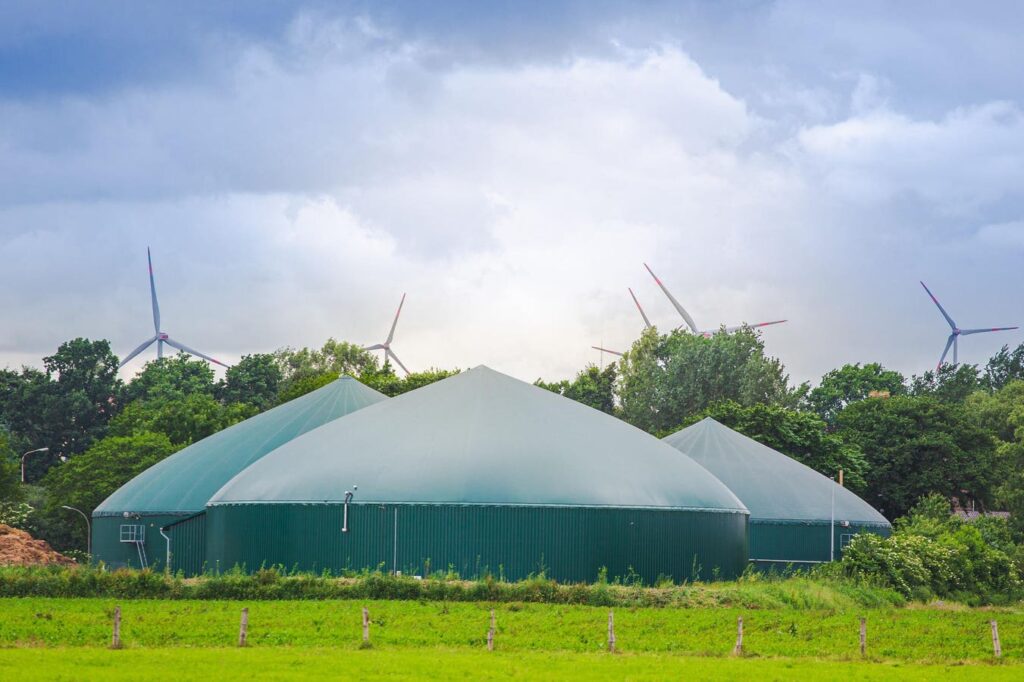Sergey Buchin is the Founder and CEO of IRBISIO Cleantech Infrastructure Fund.
While biogas production is environmentally beneficial, it remains financially dependent on subsidies. I believe achieving long-term economic viability for this industry will require all biogas projects to maximize all available byproducts.
This approach not only generates additional revenue but also supports global climate goals by aligning biogas production with the principles of a circular economy.
Unlike the traditional linear model of “take, make, dispose,” a circular economy emphasizes reducing waste and maximizing resource use—keeping materials in circulation as long as possible. I see the potential for biogas production to exemplify these principles, offering both environmental and economic benefits.
The Environmental Case For Biogas Production
As the global population rises, so does the volume of waste. According to the World Bank, solid waste volumes are projected to increase by nearly 70% by 2050. In the U.S., factory farms alone house 1.7 billion animals—a number that has grown 47% since 2002—generating 940 billion pounds of manure annually, which is more than double the sewage output of the entire U.S. population.
When left unmanaged, organic waste contributes significantly to greenhouse gas emissions, especially methane, which is over 25 times more potent than CO₂. I believe biogas production can provide an efficient solution, converting organic waste into valuable energy, reducing methane emissions and supporting sustainable agricultural practices.
But to lessen reliance on subsidies, the biogas industry must fully capitalize on its byproducts, including carbon dioxide (CO₂), digestate, biochar and heat. Each has distinct characteristics, uses and market potential, presenting a profitable opportunity for companies willing to innovate and invest in these areas.
Key Byproducts And Their Market Potential
Carbon Dioxide (CO₂)
I find that biogenic CO₂, a renewable byproduct of biogas, holds untapped market potential as a sustainable alternative to fossil-based CO₂. It is used in a range of industries, from beverage carbonation and greenhouse agriculture to industrial processes like refrigeration and welding.
Despite its potential, I find biogenic CO₂ remains underutilized. Europe has made strides in biogas production, accounting for 18 billion cubic meters in 2020, with a projected increase to 35 billion cubic meters by 2030—equal to 10% of the European Union’s natural gas usage. As can be seen from their example, capturing and monetizing this CO₂ offers an efficient and profitable pathway for the biogas sector.
Regulatory support for CO₂ capture and utilization is critical. For example, the European Commission is developing a regulatory framework that rewards environmental contributions from CO₂ capture. In the U.S., the Department of Energy has launched a carbon dioxide removal (CDR) purchasing program, investing $1.2 million in 24 projects to advance carbon removal technologies, reflecting government interest in carbon management as an economic driver.
Digestate
Digestate, the nutrient-rich residue left after anaerobic digestion, serves as a powerful organic fertilizer that offers an eco-friendly alternative to synthetic fertilizers. Rich in nitrogen, phosphorus and potassium, digestate provides nutrients that are readily available for plant uptake and gradually release into the soil, promoting healthier crops and reducing nutrient leaching.
According to the European Biogas Association, replacing synthetic fertilizers with digestate can significantly reduce greenhouse gas emissions, save fossil resources and decrease water usage.
However, like with biogenic CO₂, digestate remains underutilized, partly due to limited market development and awareness. In the U.K., Publicly Available Specification (PAS 110) certifies the quality of digestate and similar standards across markets could help boost its use.
The European Council is also exploring revisions to the Nitrates Directive, which would support new farming techniques, including those that use digestate as a sustainable fertilization method.
Heat
Biogas consists primarily of methane (CH₄) and carbon dioxide (CO₂). When combusted, biogas can produce significant amounts of heat, useful in various industrial and agricultural applications.
Heat from biogas combustion is also harnessed in combined heat and power (CHP) systems, where it is burned in a turbine or engine to produce both electricity and heat. CHP systems offer energy efficiency by generating both heat and electricity from a single fuel source and are widely used for district heating, industrial processes and greenhouse heating.
Direct utilization of heat from biogas is economically viable, especially in industrial settings where biogas can be co-fired with other fuels. While CHP systems require more capital, they can significantly enhance the overall energy efficiency and sustainability of biogas operations.
Promoting Circular Economy Practices
To maximize its environmental and economic potential, the biogas industry must integrate circular economy principles. This involves recognizing the value of byproducts like CO₂, digestate and heat and establishing the necessary market infrastructure to monetize them. Regulatory incentives that reward environmental benefits can further support this transition, helping reduce waste, cut carbon emissions and create new revenue streams for the biogas sector.
I think business leaders should look to target voluntary markets where climate-conscious companies are willing to pay premiums for sustainable alternatives. By fully utilizing byproducts such as CO₂, digestate and heat, biogas companies can create diversified revenue streams and reduce financial reliance on subsidies.
In developing regions, biogas businesses can leverage local cost advantages and collaborate with climate-conscious companies from developed markets. Sourcing local suppliers for construction and equipment can also reduce capital costs, making projects more feasible despite limited infrastructure or regulatory uncertainty.
Staying ahead in a rapidly evolving industry requires fostering a culture of innovation. I’ve found that participation in industry associations, such as the American Biogas Association or the European Biogas Association, provides valuable insights into best practices, technological advances and emerging regulatory trends.
Lastly, long-term contracts and public-private partnerships are essential for securing stable revenues and attracting investment. Projects with steady cash flow can secure low-cost debt financing, which, based on my experience, typically covers 50% to 75% of capital requirements. This helps provide dependable returns that attract investors.
Transitioning To Sustainability
Those within emerging biogas markets have the opportunity to shape regulatory frameworks that support sustainable production. With the right policies and infrastructure, I believe the biogas sector can transform from a subsidy-dependent industry into a self-sustaining, profitable contributor to global climate objectives.
Forbes Business Council is the foremost growth and networking organization for business owners and leaders. Do I qualify?
Read the full article here











